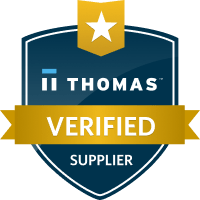One Country, Two Systems – Hong Kong

Written by Carrie Konopacki
"Special Status"
Twenty-three years into a 50-year agreement, Hong Kong is on the verge of losing the US-Hong Kong Policy Act of 1992, commonly referred to as “Special Status.”
The special status with the U.S. affords them to operate independently from China, establishing Hong Kong as an international financial hub and business investment mecca.
It also allows them to import certain sensitive technologies and enjoys U.S. support for its participation in international bodies like the World Trade Organization.
The status loss comes on the heels of Beijing implementing a national security law in Hong Kong. This law is controversial as some believe it to be in breach of the July 1, 1997 Handover agreement between China and Britain (1984 Sino-British Joint Declaration). The declaration stated the “current social and economic systems” and “life-style” in Hong Kong would remain the same for 50 years. The term “one country, two systems” is the name of the framework that allowed Hong Kong to continue their current capitalist economy and citizens would still be allowed their rights (assembly and religious beliefs, speech, press, etc). The 50-year agreement was designed to allow a gradual return of control to China from British Colonial rule.
Business is Business
Hong Kong is attractive to international companies with its access to China, rule of law, autonomy, and civil liberties. But with the new security law from China, top members of the US administration believe the new security law will cause Hong Kong to no longer qualify for the special status as they will no longer have enough autonomy of govern from China to justify continuation.
If Hong Kong does lose their special status, then exports would be subject to the same tariffs the U.S imposed on China. Hong Kong is the world’s largest exporter of electronic circuit components. They account for almost 19% or ~US$134.5 billion.
A statement by the U.S. Chamber of Commerce, “Hong Kong’s autonomy under the “one country, two systems” framework has long been among its greatest assets in fostering an innovative, transparent, rule-of-law-based economy that prizes the role of markets. We are therefore deeply concerned that the Chinese government is considering a sweeping national security law that could undermine this framework.”
Hong Kong Disruption
If the U.S. voids the special status, companies could choose to move their goods directly through ports in mainland China; paying the higher tariffs and raising prices on finished goods to the consumer. Another concern is China does not enforce Intellectual Property Rights (IPR). Companies who export sensitive technology or product to Hong Kong are now at risk. Currently, there are companies that setup purchasing/procurement offices in Hong Kong to order items that are classified as sensitive. Items would be shipped to China en route to Hong Kong or drop-shipped directly to China. Can your company adapt to and survive another disruption?
A recent deep dive survey by Gartner showed 55% of global supply chain leaders (260 companies), plan to update their supply chain networks and become highly resilient over the next few years in response to recent global disruptors; i.e. U.S. -China trade war, Brexit, and COVID-19. One of the surveys “Weathering the Storm: Supply Chain Resilience in an Age of Disruption,” chief finds was the percentage of companies who moved their sourcing and manufacturing activities out of China, or plan to do so over the next two-to-three years. Gartner found 33% have intent because of the recent global disruptors.
US – China Footprint
A solution is to find a China based company that builds products which cater to the U.S. market and that can be an integrator in China to assemble (non-sensitive) components to a higher-level (sensitive) assembly. “Sensitive” does not mean the item is a threat to national security but rather protects the company’s IPR.
It will be interesting to watch as things develop at a more rapid pace.
GMI Solutions has been helping capital equipment OEMs manufacture assemblies in the U.S.A. and China for over 20 years. With ISO 13485 and CCC certified facilities in both regions, GMI is able to help OEMs build products in either region or in both simultaneously.
References
- Logistics Management, “New Gartner survey takes deep dive into global sourcing and supply chain resiliency.”, June 2020
- Gartner, "Weathering the Storm: Supply Chain Resilience in an Age of Disruption", May 2020.
- Hong Kong Govt, "The Joint Declaration. (n.d.)."
- History, "How Hong Kong Came Under 'One Country, Two Systems' Rule"
- U.S. Chamber of Commerce, "U.S. Chamber of Commerce Urges Chinese Government to Preserve Hong Kong’s “One Country, Two Systems” Framework", May 2020
- World's Top Exports, "Electronic Circuit Component Exports by Country", May 2020




